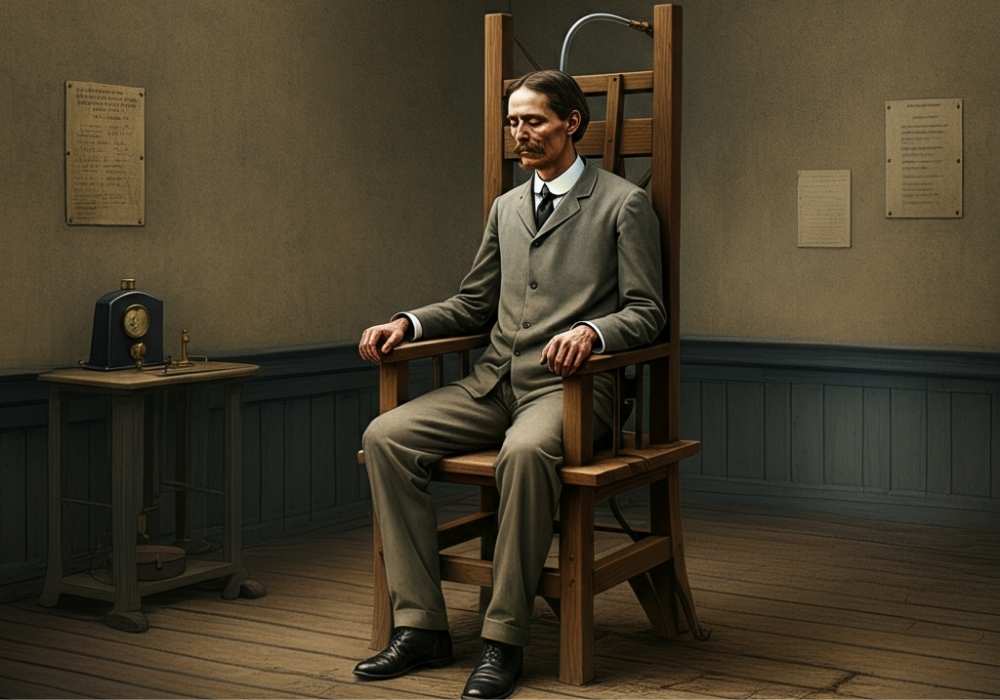The electric chair is a powerful symbol of justice, ethics, and debate. Few inventions in history have generated as much conversation as this device used for capital punishment. But who invented the electric chair, and why was it created? Exploring the origins of this grim contraption reveals a fascinating intersection of scientific innovation, legal history, and moral dilemmas. This blog dives deep into the electric chair’s invention, the mind behind it, and its role in shaping justice systems worldwide.
The Need for a “Humane” Execution Method

The invention of the electric chair occurred in the late 19th century—when society began questioning the morality and methods of capital punishment. Hanging had long been the dominant form of execution in the United States. However, as the public became increasingly disillusioned with its inefficiency and potential for gruesome failures, calls grew for an alternative method that could deliver a quicker and more “humane” death.
Amid these discussions, new developments in electricity captured the imagination of innovators and lawmakers alike. Suddenly, electricity—seen as the frontier of progress—was pitched as not just a tool to light cities but also as the answer to reforming capital punishment.
Enter Alfred P. Southwick
Alfred P. Southwick, a Buffalo, New York dentist, is credited with inventing the electric chair. Southwick’s work was heavily inspired by developments in electrical technology and his observations of electrical accidents. As legend tells it, he was struck by witnessing a drunk man die instantly after accidentally making contact with a live generator. This incident planted a controversial idea in Southwick’s mind.
Southwick believed electricity could provide a swift and ostensibly painless means of execution. Drawing from his professional background as a dentist, he also noted the adjustable chairs used for dental patients. By combining these elements, he conceptualized the electric chair—a device designed to harness electricity to enact justice.
The Birth of the Electric Chair
Southwick’s idea took shape in the 1880s as he collaborated with other professionals, including members of the New York Medico-Legal Society. While Southwick provided the conceptual framework, engineers and electricians helped make his vision a reality. The first electric chair model was built in New York as part of a legislative push for execution reform.
This movement culminated in the creation of the Electrical Execution Act of 1888, which named electrocution as the state’s primary execution method. The electric chair’s debut marked a revolutionary technological and law enforcement shift.
The First Electric Chair Execution
The first execution via the electric chair occurred in 1890 and involved William Kemmler, a convicted murderer. While history books describe Kemmler’s execution as groundbreaking, it was far from smooth. The first round of electricity failed to kill him instantly, and a second jolt was required to complete the execution. This event raised immediate concerns over this new method’s “humane” nature.
Despite its controversial debut, the electric chair quickly gained traction. Many states adopted it as their primary execution method, believing it to be more advanced and civilized than hanging.
The Role of the Edison and Westinghouse Rivalry
The electric chair’s invention and adoption coincided with the raging “War of the Currents” between Thomas Edison and George Westinghouse. Edison was a proponent of direct current (DC), while Westinghouse championed alternating current (AC). Fearful that AC would become the dominant form of electrical energy, Edison seized upon the electric chair to discredit his competitor.
Edison actively associated AC power with danger. He even funded demonstrations in which animals were electrocuted with AC to highlight its lethality. The electric chair was built to operate using AC, further fueling Edison’s campaign to tarnish Westinghouse’s name. Ironically, instead of eliminating AC’s credibility, the War of the Currents added to the drama and allure surrounding the electric chair’s invention.
Impact on Legal and Ethical Systems
The invention of the electric chair sparked heated debates about justice, ethics, and technology’s role in society. Though designed as a “humane” execution method, multiple botched executions throughout history brought its humanity into question. Groups advocating against the death penalty capitalized on such incidents to argue for its abolition.
Over time, the electric chair transitioned from being a symbol of progress to one of moral conflict. While its use peaked in the mid-20th century, its prevalence has declined sharply. Today, lethal injection has replaced electrocution as the dominant execution method due to its perception as being less cruel.
However, a handful of U.S. states still allow the electric chair as an optional method of execution. Its continued existence serves as a reminder of the complex history surrounding capital punishment and the quest for methods deemed both practical and ethical.
Lessons from the Electric Chair’s History
The story of Alfred P. Southwick and the electric chair is not just about an invention—it’s about the intersection of morality, technology, and public perception. Here are a few takeaways:
The Duality of Innovation: Southwick’s invention reflects how technological advances can have progressive and deeply controversial applications.
The Power of Public Perception: Society’s reception to innovations such as the electric chair depends on their effectiveness and alignment with evolving moral standards.
Ethical Responsibilities: The electric chair’s history raises essential questions about innovators’ and lawmakers’ ethical considerations when adopting new technologies.
Where Do We Go From Here?
The invention of the electric chair reminds us that technological advancements often challenge societal norms. While Alfred P. Southwick’s creation aimed to improve fairness and humanity in the justice system, it also opened the door to more profound ethical questions that persist in today’s debates about the death penalty.
Reflecting on the history of the electric chair allows us to better understand the cultural and technological forces that shape our legal systems. It’s a stark reminder that progress often comes with unintended consequences, and maintaining a balance between innovation and ethical responsibility is crucial.











